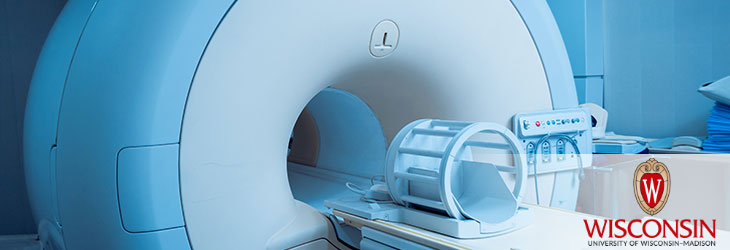Radiation Therapy

Minimally Invasive Microwave Ablation Antennas
WARF: P140132US01
Inventors: Nader Behdad, Susan Hagness, Hung Luyen
The Wisconsin Alumni Research Foundation (WARF) is seeking commercial partners interested in developing an interstitial microwave ablation antenna that does not require a balun.
Overview
Microwave ablation is a minimally invasive method for treating cancer, especially solid tumors. The method uses an interstitial antenna that heats tissue with microwave energy.
These antennas require coaxial cables, resulting in unwanted electric currents that flow on the outer conductors of the feeding cables. If not properly suppressed, the currents may damage healthy tissue. The problem typically is addressed with a device called a balun, which uses a hollow circular conductor to encompass the feeding cable.
Baluns increase the overall diameter of an antenna, making it more invasive when inserted into the body.
These antennas require coaxial cables, resulting in unwanted electric currents that flow on the outer conductors of the feeding cables. If not properly suppressed, the currents may damage healthy tissue. The problem typically is addressed with a device called a balun, which uses a hollow circular conductor to encompass the feeding cable.
Baluns increase the overall diameter of an antenna, making it more invasive when inserted into the body.
The Invention
UW–Madison researchers have developed two minimally invasive, balun-free antenna designs that are small enough to treat cancers otherwise out of the reach of microwave ablation.
The first design can take any base-fed monopole, spiral or bent wire configuration. Alternatively, the antenna can use a structure more suitable for higher frequencies (five GHz to 30 GHz). This design uses cable shielding over a balanced two-wire transmission line. The design protects surrounding tissue and eliminates the need for baluns.
The first design can take any base-fed monopole, spiral or bent wire configuration. Alternatively, the antenna can use a structure more suitable for higher frequencies (five GHz to 30 GHz). This design uses cable shielding over a balanced two-wire transmission line. The design protects surrounding tissue and eliminates the need for baluns.
Applications
- Smaller microwave ablation antennas
- Ideal for treating liver, kidney, lung, bone, breast, prostate and pancreatic cancer as well as benign uterine tumors
Key Benefits
- Balun-free designs
- Significantly thinner and less invasive
- May treat cancers otherwise out of the reach of ablation
- The antenna system can be even smaller when operating at higher frequencies.
- Can be routed more easily through a biopsy needle or catheter
Stage of Development
The researchers have completed simulations showing the desired results and are working on prototypes.
The development of this technology was supported by WARF Accelerator. WARF Accelerator selects WARF's most commercially promising technologies and provides expert assistance and funding to enable achievement of commercially significant milestones. WARF believes that these technologies are especially attractive opportunities for licensing.
The development of this technology was supported by WARF Accelerator. WARF Accelerator selects WARF's most commercially promising technologies and provides expert assistance and funding to enable achievement of commercially significant milestones. WARF believes that these technologies are especially attractive opportunities for licensing.
Additional Information
For More Information About the Inventors
For current licensing status, please contact Jeanine Burmania at [javascript protected email address] or 608-960-9846